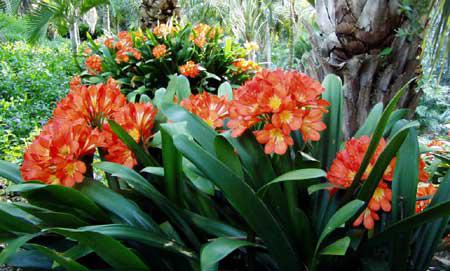Plants for a shade garden
Having a shady garden has resulted in a garden that lacks colour, although I do tend to add a bit of colour here and there with painted furniture and pots. With the rainy season due to start any minute - and the temperature still in the low twenties - I've decided that now is the best time to cut down the overgrown jungle and plant up some colour myself!
I have done some research on plants that thrive in a shade garden, especially plants that also offer a bit of colour, and I am going to pop off to the nursery to start stocking up. Here is the list of plants that I came up with:
Shade loving plants
Impatiens
Impatiens are one of the most popular plants for shade - and it's easy to see why. They bloom constantly throughout spring and summer, offering flowers in just about every colour, and couldn't be easier to grow. Look for New Guinea impatiens, which bear larger blossoms and stockier stems; double impatiens, which feature petal-filled, roselike flowers; or mini impatiens, which cover themselves in small blooms.
Coleus
Grow coleus for its fantastic foliage - there are hundreds of varieties, and they feature leaves splashed, spotted, streaked, and otherwise coloured with shades of chartreuse, purple, pink, red, black, and green. Make eye-catching combinations by growing a few varieties of coleus together - or complement your favourite flowers with coleuses that have similar leaf colours.
Hellebore
Hellebore (Helleborus), also called Christmas rose, is one of the earliest bloomers in shady gardens. Look for its burgundy, pink, cream, green, or white flowers in late winter or early spring. Although it looks delicate, the Christmas rose is quite sturdy once it gets established. Hellebore grows 30cm tall.
Corydalis
Yellow Corydalis is a hard-working perennial that takes the prize for being the longest bloomer in the shade garden. Enjoy its clusters of yellow flowers from spring until winter. It's not just the flowers that are beautiful; the grey-green leaves are attractive as well. The plant grows about 30cm tall.
Liriope
Used often as a groundcover or an edging plant, liriope is so popular for good reason. It stays evergreen year-round in many climates, produces pretty blue or white flowers, and is about as tough a plant as you'll hope to meet. Its dense tufts of almost-evergreen, broadly grassy leaves are often striped. Stiff stems bear tight spikes of tiny blue or white bells, similar to those of grape hyacinth. It is best protected from drying winds in rich well-drained soil that retains moisture. Plant in composted, moist but well-drained soil. Can be grown in drier regions provided it is watered regularly. Not suited to hot, humid conditions or dry inland areas.
‘Evergreen Giant’ is a champion plant that will grow up to 90 cm tall with a spread of 45 cm in ideal conditions and it is hardy to cold. Dainty sprays of light purple flowers appear between the strap-like leaves in late summer to autumn, followed by dark berries. (The Gardener magazine)
Streptocarpus
Also known as the Cape primrose and related to the African violet. Streptocarpus formosus flowers almost throughout summer, from late spring to autumn. One or two flowers are formed at the tips of the long flowering stems. The large trumpet-shaped
flowers are white with soft mauve markings that run along the edge
of the petals and into the distinctive yellow throat. Many species are perfectly suitable for the shady garden which has cool conditions and good organic soil.

